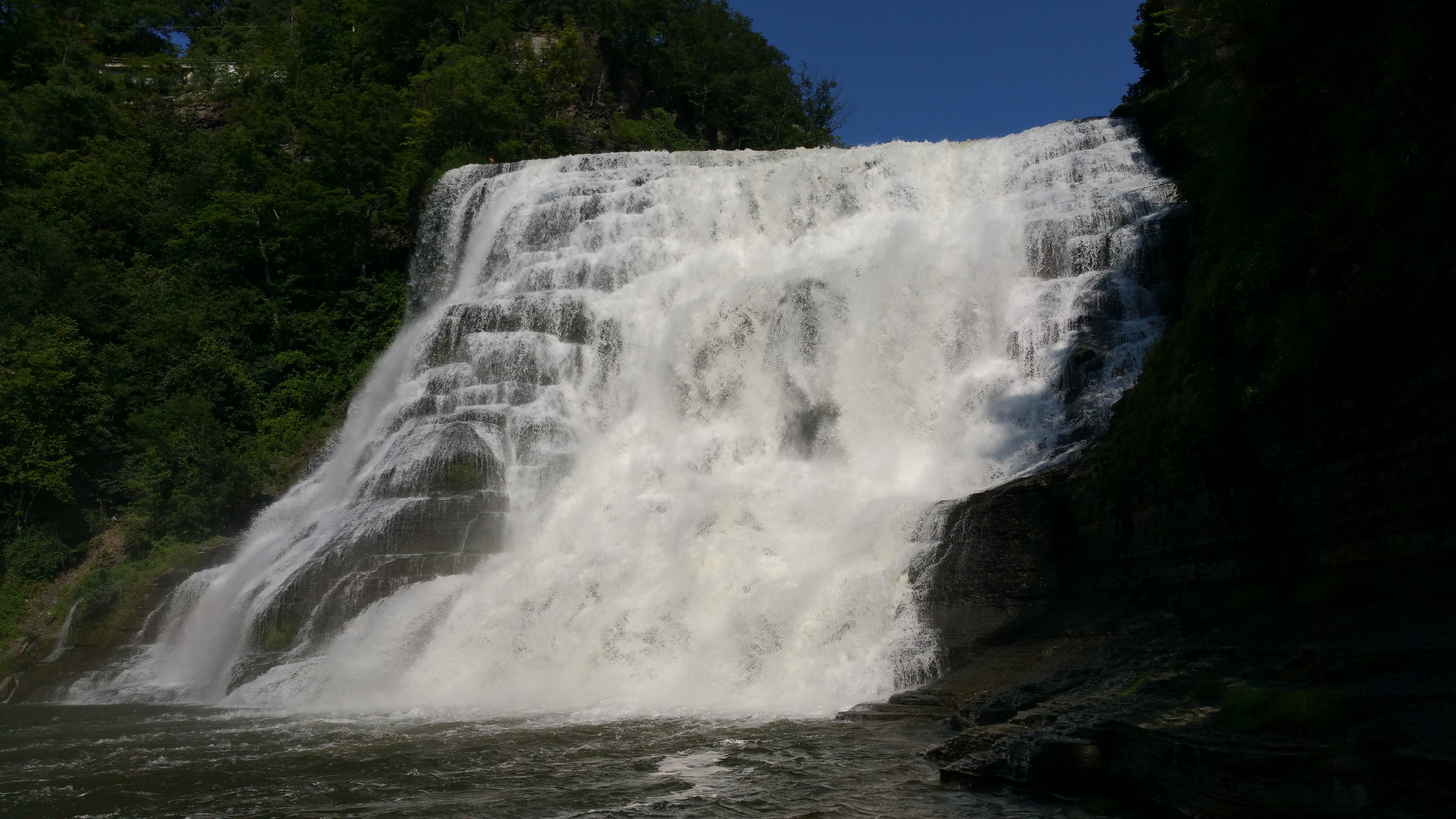
Fall Creek Gorge- Ithaca, NY
As already discussed, Ithaca is gorges. Plural. After exploring Cascadilla Gorge, and the architectural gems of Cornell’s campus, you are ready to follow the dramatic flow of water down Fall Creek Gorge, as it works its way to Cayuga Lake.
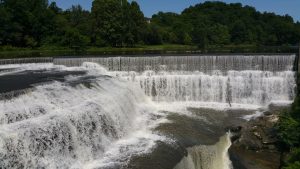
Although there is not one continuous trail from Beebe Lake to Ithaca Falls, it is easy enough to walk along streets, or drive between overlooks. Start your journey with the water at Beebe lake. Originally a forested swamp, today’s lake was formed in 1898 when a dam was constructed above Triphammer Falls to capture the waterpower of Fall Creek. Triphammer Foot Bridge is a great spot to view the lake, the dam, and some beautiful geology.
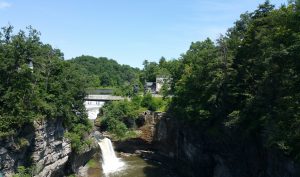
Viewing the falls today from the Thurston Avenue Bridge, little evidence remains of Cornell’s Hydraulic Lab. Constructed in 1898 by the College of Engineering, it was used to study water purification and flow. It was a vast 70 foot tall industrial building that clung to the side of the gorge, which emitted streams of water from various openings. It stood in stark contrast to the natural beauty of the falls, but was somewhat mesmerizing it its own right. Several floods over the years made the building unstable, and it was abandoned sometime in the 1960s. After fifty years, the lab lost its battle with nature, and on a frosty February day in 2009, it tumbled into the gorge, forever altering photos of the falls.
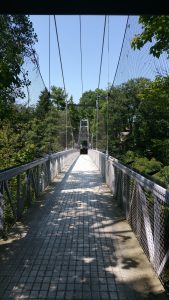
Next, walk past the College of Architecture to the Pedestrian Suspension Bridge, which crosses the gorge and offers views of Rocky Falls and the hydroelectric plant. The 25 foot cascade has been producing electricity for Cornell’s campus since 1904, albeit currently only 2% of their total needs.
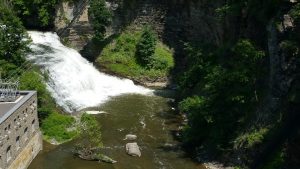
Unfortunately, because people love to leap from bridges, particularly in Ithaca, the views from the bridge are obscured by nets. Even so, it is worth bouncing your way across. You can get pictures of both the bridge and nearby Foaming Falls by taking 110 stone steps 140 feet down to the river. The views are worth the climb, and are far better than what you will see from the bridge.
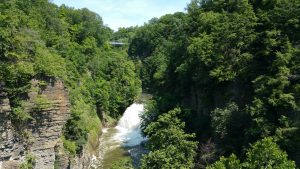
Leave the campus behind, and take Fall Creek Drive to the Stewart Avenue Bridge. This bridge offers excellent views both back up the gorge to the suspension bridge, and down the gorge, all the way to Cayuga Lake in the distance. Looking upstream, Forest Falls, a 25 foot cascading fall, is visible. Surrounded by steep walls, elevated above Ithaca Falls, this is a hanging valley, caused by southbound glaciers.
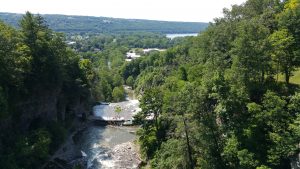
The other side of the bridge offers views of the precipice of Ithaca Falls, as well as ruins of Ezra Cornell’s diversion dam, which was used to run a complex of mills at the site. The 150 foot fall was so powerful, it allowed a concentration of several mills to be constructed on the south bank of Fall Creek in the early 1800s, whose ruins can be seen at the base of the falls today.
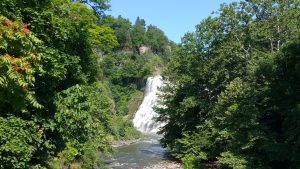
From the bridge on Lake Street, you will only have an obstructed view of the falls, at least in the summer. However, the falls are accessible via an easy, short trail, with the best views awarded to those who wade out into the water. The cascading falls are the last before Fall Creek enters Cayuga Lake, and are by far the most impressive. It is possible to hike along the bank to the base of the falls, which provides prospective on their size and power.
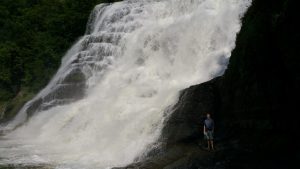
In addition to the waterfall and the ruins, the geology of the area is pretty dramatic. Visible layers of limestone, shale and siltstone not only add to the natural beauty of the area, but contain guide fossils so distinctive, they can be used as geological markers to date the rock columns. For those interested in completing the journey of Fall Creek, head over to Stewart Park, which has an interesting history itself.


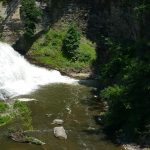
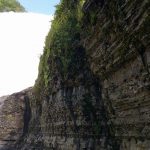
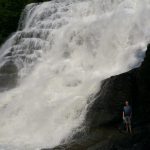
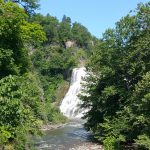
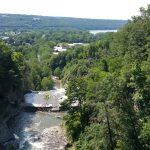
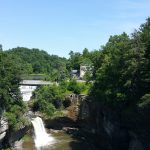
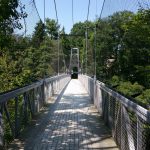

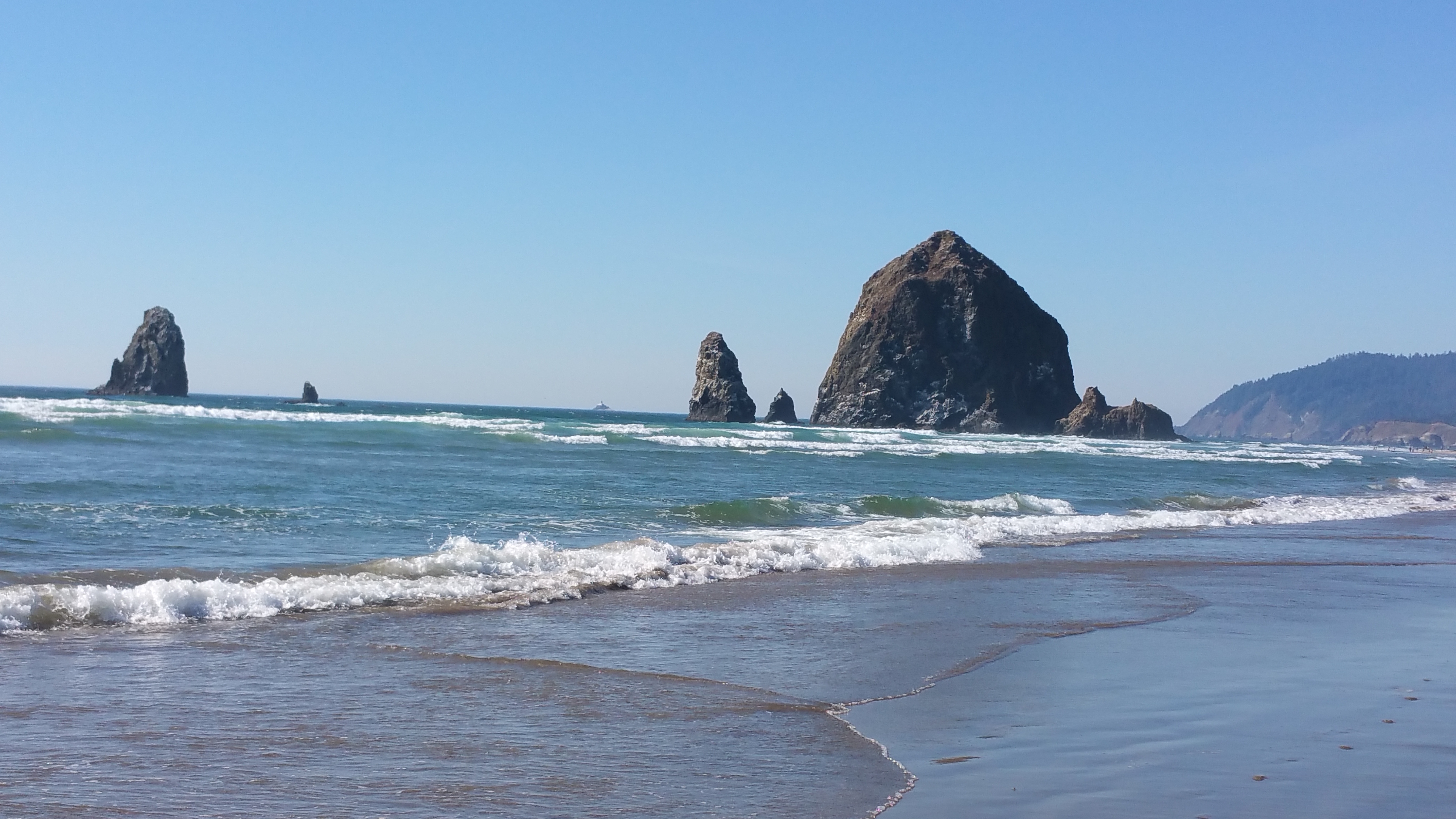
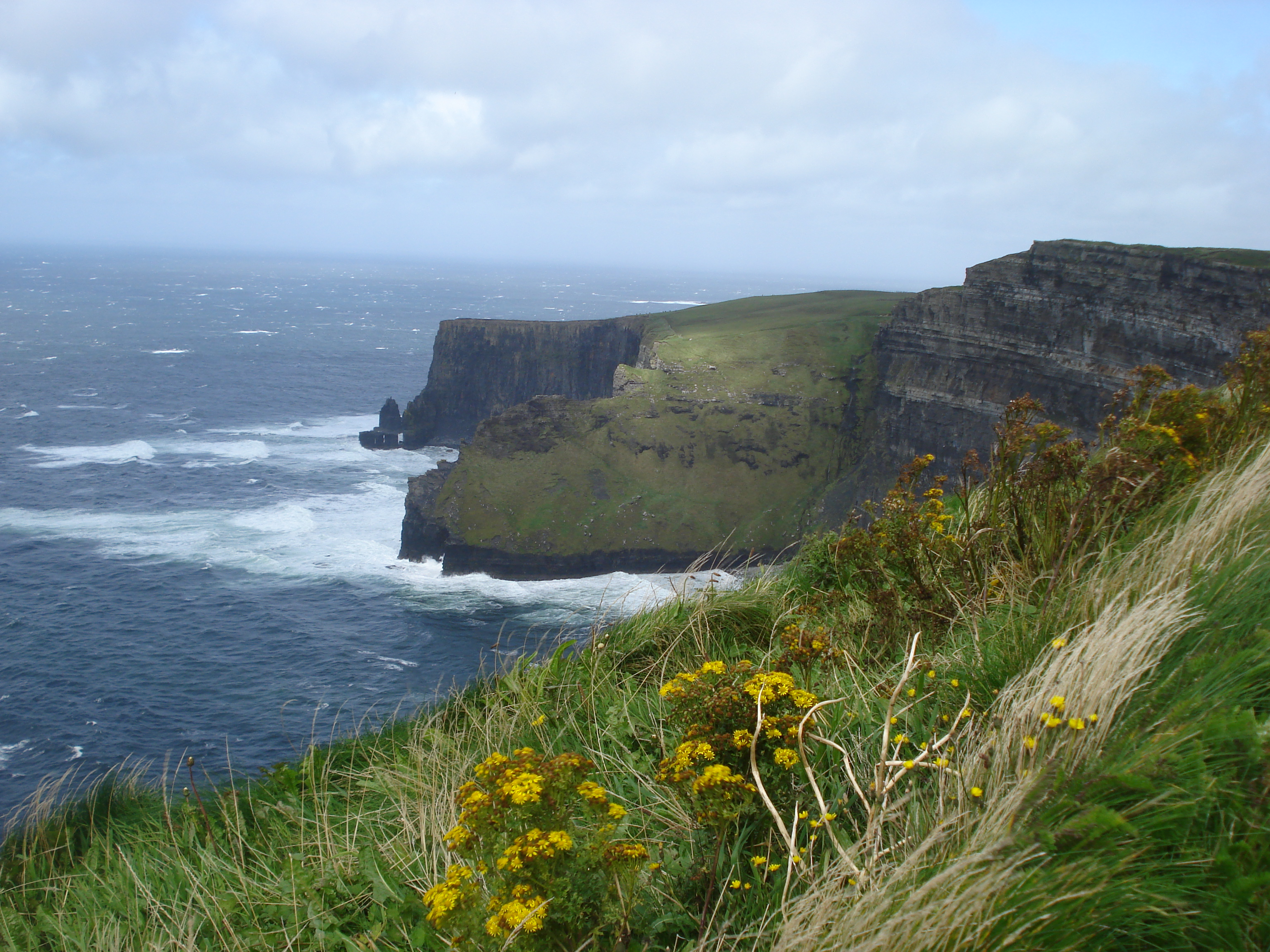
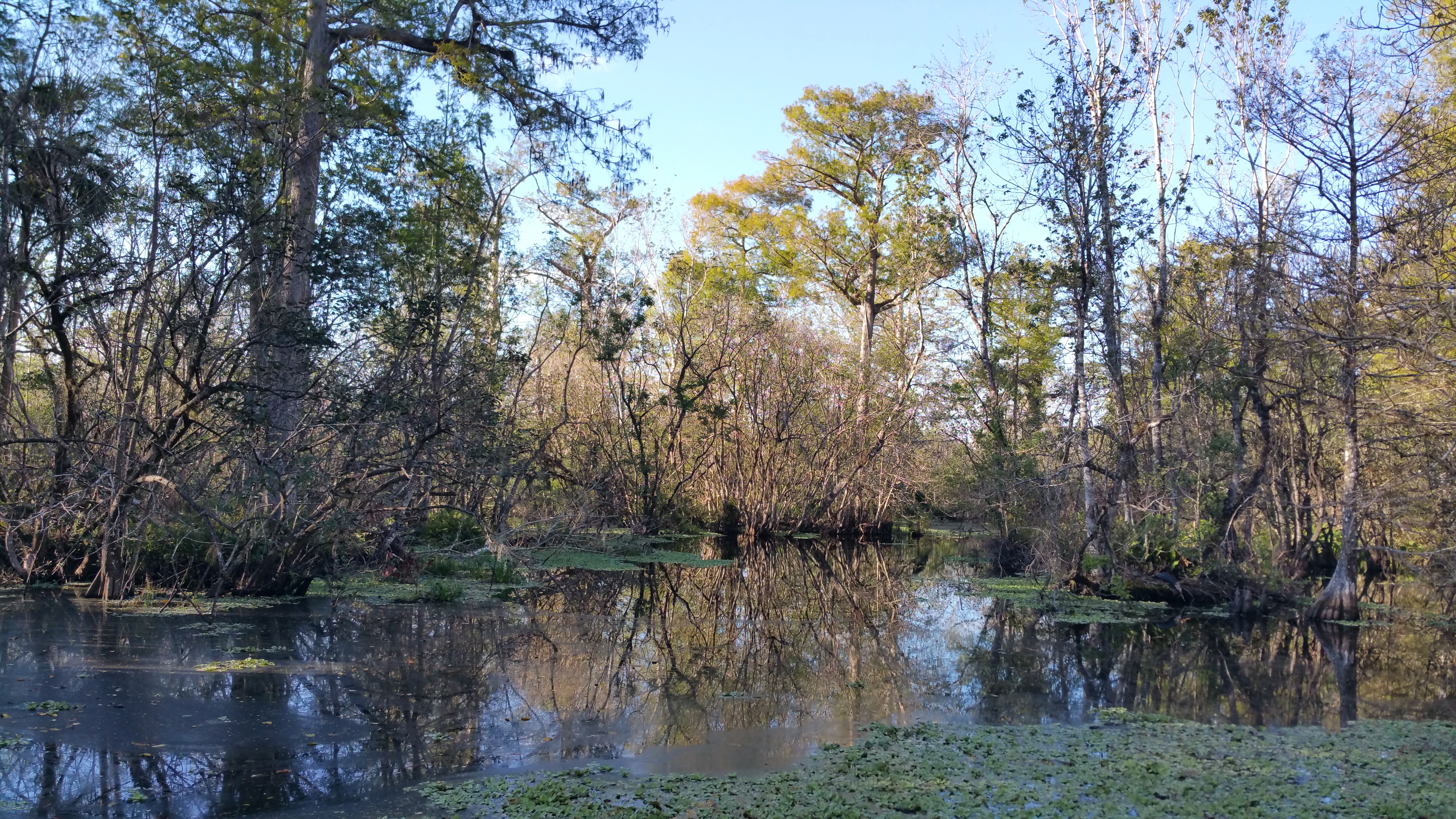
2 Comments
Pingback:
Pingback: